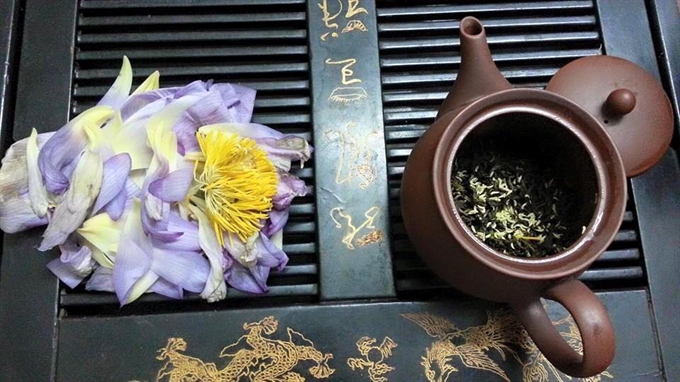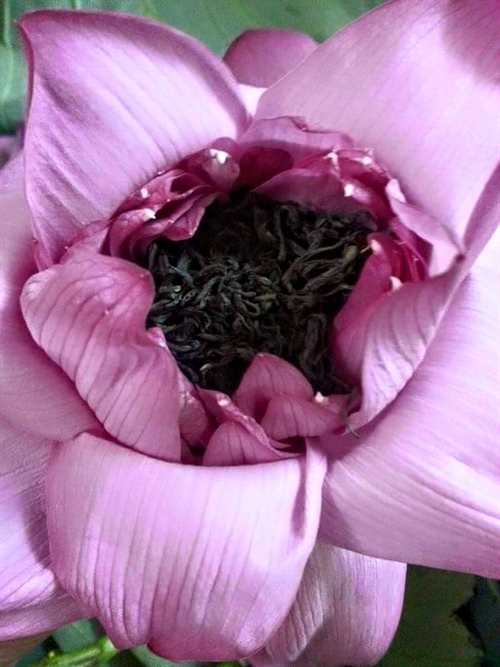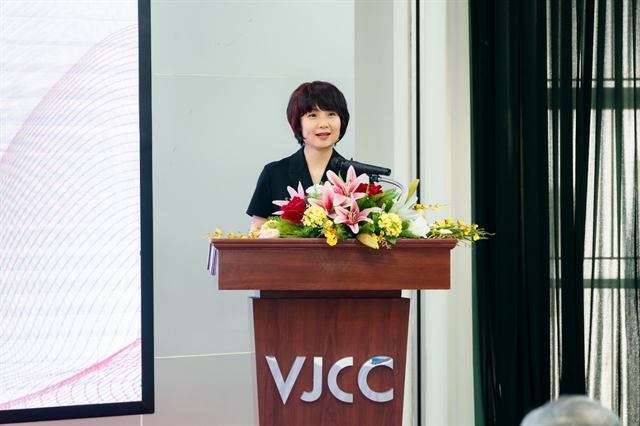 Life & Style
Life & Style

Tây Hồ lotus tea is listed among 1,793 intangible cultural heritages in Hà Nội according to the city’s Department of Culture and Sports.
 |
| Traditional method: Tea is dried and scented with lotus anthers. Photo courtesy of Trà Sen Hồ Tây Bảo Nam |
HÀ NỘI – Tây Hồ lotus tea is listed among 1,793 intangible cultural heritages in Hà Nội according to the city’s cultural authotity.
Lotus tea, or tea scented with aroma from lotus flowers, is a traditional trade in Quảng Bá Village, Quảng An Ward, and Tây Hồ District, which is the home of the famous West Lake lotus.
“It is lucky for people in the village that producing lotus tea is recognised as an intangible cultural heritage of Hà Nội City,” said Phạm Văn Tiên, 38-year-old owner of Bảo Nam Tây Hồ Lotus Tea brand.
“I think that producing lotus tea has never faded out because it is handed down from generation to generation.”
This year’s unfavourable weather has resulted in a bad crop of Tây Hồ lotus. Usually there are blooming lotuses for three or four months but this year lotuses bloom in just one month.
Tây Hồ lotus flower is famous for its fragrance and pink colour of a hundred petals, which are quite different from other lotus strains.
In Quảng Bá Village, there are about 25 households specialised in producing lotus tea with an output of about one tonne of lotus tea per crop.
In addition to Quảng An, there are also some other wards planting lotus but the output is very limited.
To produce lotus tea, the local people have to harvest lotus blossoms from 5am before sunrise so that their fragrance can be best maintained.
After picking, lotus anther, or the bag of fragrance, is separated immediately. All these actions must be carried out quickly to keep the fragrance of the lotus for mixing with green tea. One hundred lotuses will produce one gram of lotus anther.
Under a project on investigating and protecting intangible cultural heritages in the city, besides Tây Hồ lotus tea, many other forms including folk literature, folk performance arts, socio-belief customs, traditional festivals and handicrafts are recognised as intangible cultural heritages of Hà Nội.
The project was carried out in 29 districts from 2013 to 2015 by the city’s culture department in co-ordination with the Centre for Cultural Heritage Research and Promotion under the Cultural Heritage Association of Việt Nam.
According to statistics, each one of three outskirts of Đông Anh, Ba Vì and Thường Tín have the most heritages with 120 taking different forms.
The most widely recognised are traditional festivals with 1,200; socio-belief customs with 213 and traditional handicraft with 175.
The culture department has proposed 276 heritages to give priority in protection and six heritages to develop profiles for recognition as national intangible cultural heritage such as embroidering in Thường Tín; Ải Lao dancing and singing in Long Biên District; and the Chèm Temple Festival in Northern Từ Liêm District.
The project on investigating and protecting intangible cultural heritages in the city was carried out by authorities, experts and local residents in particular.
“Heritages belong to the community, and we highly appreciate the role of the community in directly investigating heritages,” said Phạm Thị Lan Anh, head of Heritage Management Desk of Hà Nội Department of Culture and Sports.
The department and Centre for Cultural Heritage Research and Promotion propose Hà Nội to set up a plan for preservation and development of the city’s intangible cultural heritages in the 2016-25 period. -- VNS
 |
| Rich fragrance: Only slightly-opened lotuses are collected for mixing with tea because the fragrance of lotus can be kept best in that way. -- Photo courtesy of Trà Sen Hồ Tây Bảo Nam |




